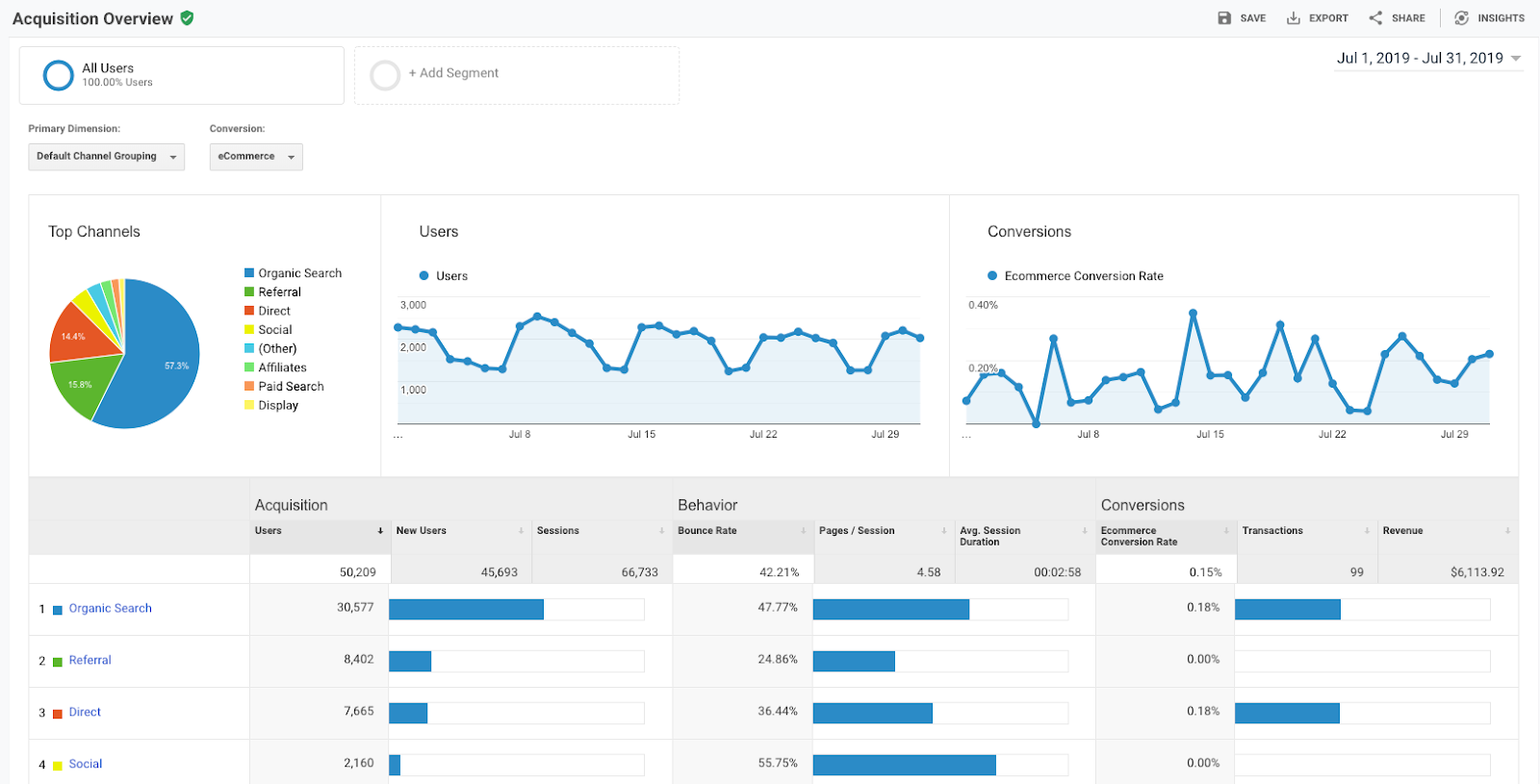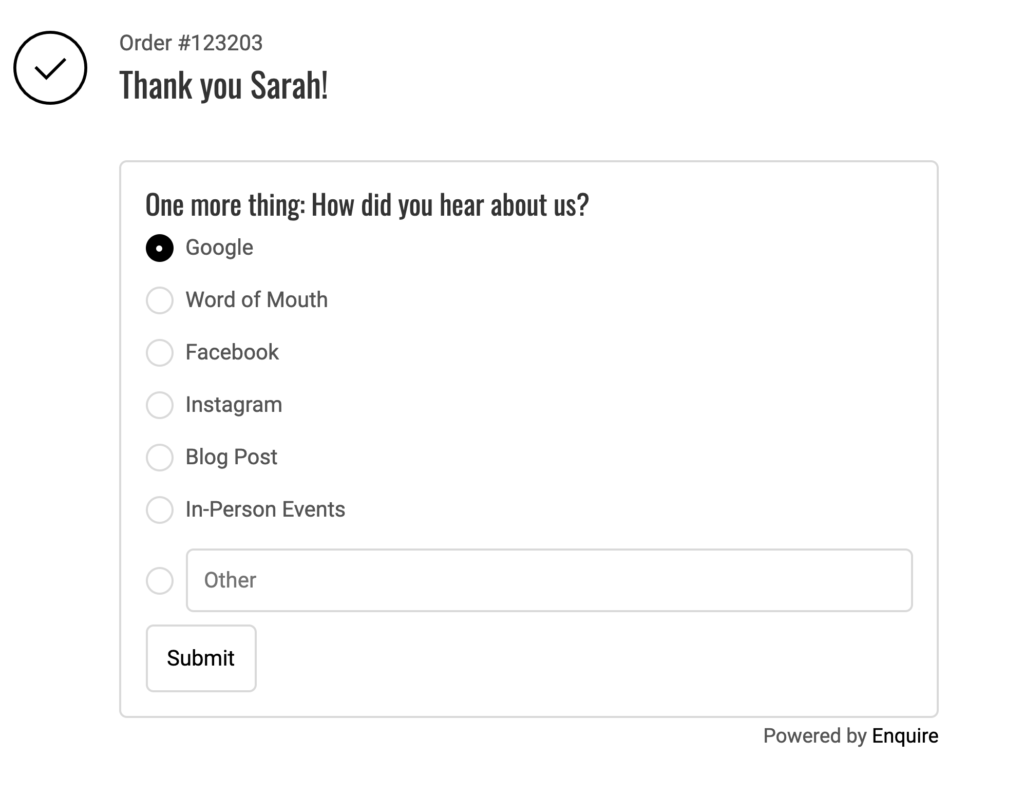The digital world is made up of a complex combination of different channels.
In this increasingly omnichannel marketplace, brands have more customer touch points to monitor than ever before. It can be difficult to identify which channels your customers prefer, how they like to get in touch, and where they’re actually hanging out during different stages of the sales cycle.
What Is a Customer Touch Point?
Customer touch points define any moment of contact with your customer. Each point of contact adds up to create the overall customer experience, so touch points significantly influence how shoppers perceive your brand.
Many ecommerce brands make the mistake of identifying a touch point as a channel instead of a moment of interaction between that brand and a customer.
For example, they’ll list “Instagram” as a touch point, without considering how a customer interacts with them on Instagram. It’s important to remember that a touch point is a moment where a customer actively interacts with your brand, not just passively views your Instagram stories or reads a blog post.
The Challenges of More Customer Touch Points
A study by Google shows that the average customer journey can involve between 20 and 500 touch points. This number varies by product. Candy has about 20 touch points, while bigger purchases like flights see up to 500.
It’s no surprise that this many touch points bring several fresh challenges for brands and their customers.
Customers Might Feel Overwhelmed With Options
The additional touch points that span multiple channels both online and offline can cause option paralysis in consumers. They may not know the best channel to speak to customer service, file a complaint, or learn about a new product.
Brands Have More Channels to Monitor
From the brand side, additional touch points mean more work. Instead of just one or two channels to monitor, assess, and improve, merchants are tasked with optimizing multiple different touch points across a host of different channels.
It’s Nearly Impossible To Please Everyone
As noted by Oberlo, customers prefer to reach customer support by telephone. However, further research shows that more than half of consumers think automated telephone systems are the most frustrating part of any poor customer service experience. Despite the ease of automation, three out of four shoppers still prefer to speak with a real person.
In contrast, Retail Dive reports that another study by IoT and mobile device management firm SOTI shows that 73% of shoppers favor self-service technologies.
Your customers will always have varied preferences that evolve over time, so it’s important to cater to the majority and pivot when necessary.
Personalizing Customer Touch Points Is Becoming a Necessity
Today’s shoppers crave personalization. They want to feel special, but this puts a lot of pressure on brands, especially ones with multiple touch points.
As noted by Forbes, 72% of consumers only engage with personalized messages. Are you being cognizant of how you can better personalize messages at every touch point?
How To Ensure You’re Monitoring and Prioritizing the Right Touch Points
1. Identify Each Touch Point
Some touch points are easy to spot: customer support tickets, for example, or a chatbot embedded on your website. Others are harder to identify and require research or data to uncover. This is especially true toward the top of the funnel, where you don’t have as much information about each customer.
One of the best ways to identify your main touch points is to map the customer journey in your customer relationship management (CRM) system. You can pinpoint the moments customers interact with your brand as well as determine where shoppers are likely to bounce or come up against friction.
Alternatively, you can dig into Google Analytics to discover which channels are sending traffic to your website. This will help identify customer touch points at the top of the funnel.
Simply check out your Acquisition Overview report to see which search engines are sending you traffic, which pages customers visit most often, and which social platforms are your most lucrative.

Image Source: Thrive
2. Take a Touch Point Inventory From the Customer Perspective
Brands often make the mistake of listing channels as touch points, but these are two separate things entirely. Consider the shopping journey from the customer’s perspective to better understand where they’re most likely to engage:
- The shopper has a need and uses a search engine to find a solution.
- The shopper chooses a brand based on great product reviews.
- The shopper engages an online chatbot to get a personalized recommendation.
- The shopper makes a purchase and begins a relationship with the brand.
- The shopper doesn’t receive their order and looks to get in touch with customer service.
Each of these moments is a key touch point in the shopping journey for a customer, and the ease (or difficulty) of engaging at each point will have repercussions on the customer experience.
3. Consider Touch Points at Every Funnel Stage
The sales funnel is made up of four key stages that shoppers move through when making a purchase. Customers at different stages of the funnel have different needs, which means they will require different touch points.
For example, someone who is just finding out about your brand will have very different needs than someone who’s been a loyal customer for two years. Here are some potential touch points at each stage:
- Awareness stage touch points: search engine optimization (SEO), social media ads, pay-per-click (PPC) ads, and blog posts
- Consideration stage touch points: website and product pages, organic traffic, and product reviews
- Decision stage touch points: branded content, customer-generated content, and chatbots
- Retention stage touch points: order confirmation, thank-you letters, customer feedback surveys, customer support interactions, and email newsletters
4. Carry Out an Internal Evaluation
By this point, you should have a fairly good idea of the different touch points that are important to your customers. Take it one step further by running an internal evaluation of all touch points to determine how they’re being managed, who’s managing them, and whether there’s room for improvement.
Consider questions like:
- Which department owns each touch point?
- How is each touch point managed?
- Which person is responsible for making each touch point successful?
- How good is the touch point experience?
- What resources or tactics need to be implemented to improve the performance of each touch point?
Knowing which customer touch points are working well — and where improvements can be made — will help you prioritize which touch points to focus on. If a small tweak on one touch point will make a big difference, bump that to the top of your to-do list.
5. Generate Customer Feedback
Simply ask your customers which touch points have the greatest impact on their purchasing experience. Send out a survey to past and existing customers asking them how they found you, what made them choose your product over a competitor’s, and what keeps them coming back. You can also ask where they think there’s room for improvement — there’s nothing quite like getting this information straight from the source.
Ask questions like:
-
What are your expectations at each touch point?
-
What is your ideal touch point experience?
-
What made you choose us over X brand?
-
How did you hear about us?
 Image Source: Responsely
Image Source: Responsely
Optimizing Your Priority Customer Touch Points Is an Ongoing Process
The fun doesn’t stop when you’ve identified your priority touch points and improved them based on customer feedback. Ensuring you’re providing an excellent omnichannel customer experience is an ongoing process that requires constant attention and tweaking. Continue to go through each of the suggested steps to find shortfalls and monitor how well each touch point is serving you and your customers.
Ready to create a winning omnichannel ecommerce experience? Check out “The Complete Guide to Omnichannel Strategy for Commerce” for tips on building a successful customer experience across several different channels.





![[Guest Blog] How to Reduce E-Commerce Returns This Holiday Shopping Season](https://technobabble.com.au/thegatewaynetau/wp-content/uploads/sites/11/2021/03/guest-blog-how-to-reduce-e-commerce-returns-this-holiday-shopping-season.jpg)